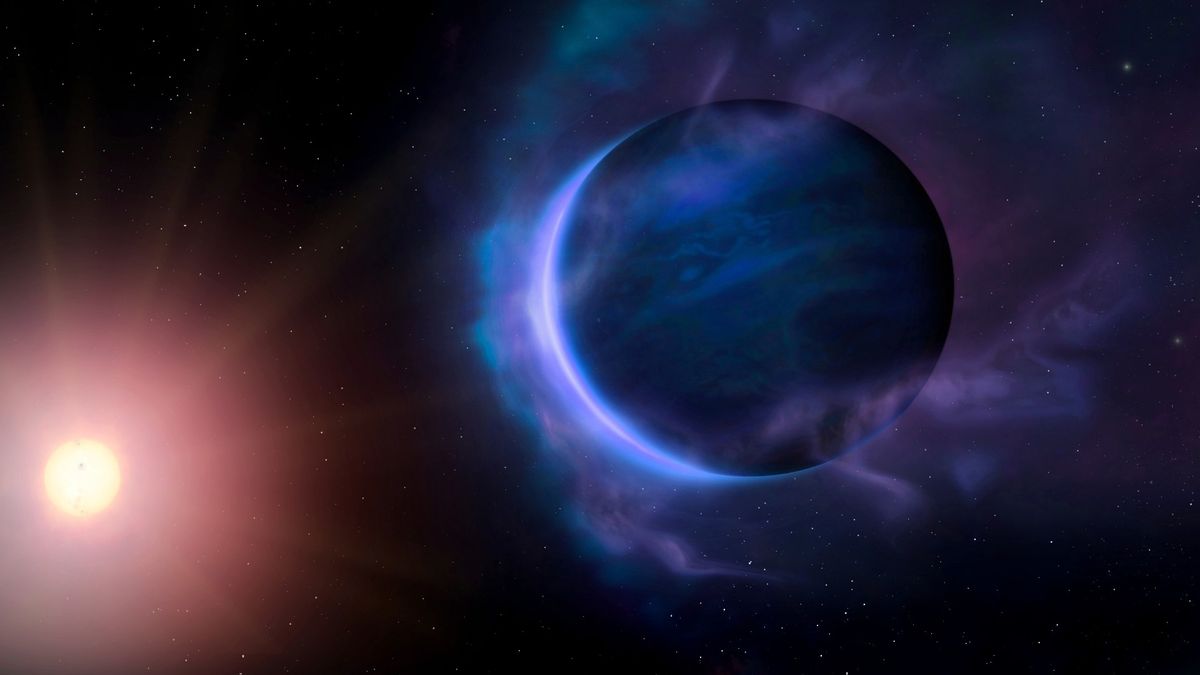Puffy helium planets could explain exoplanet size mystery
By Keith Cooper published about 21 hours ago
The fate of Neptune-like worlds that migrate close to their star is to be whittled away by stellar radiation.

An illustration of a star slowly evaporating an orbiting planet's atmosphere. (Image credit: Mark Garlick/Science Photo Library/Getty Images)
Helium could make up almost half the mass of the atmosphere of giant exoplanets that have migrated close to their star, explaining why there is a mysterious size gap in the scale of these worlds.
Over 5,200 exoplanets have now been confirmed, and many of these are larger worlds that orbit close to their star, in some cases with orbital periods that last just a few days. However, transit observations first by NASA's Kepler Space Telescope and now by TESS, the Transiting Exoplanet Survey Satellite, have found a puzzling dearth of planets with radii between 1.4 and 2.4 times that of Earth. Astronomers call this the 'radius valley' and although it seems to be telling us something fundamental about the nature, formation and evolution of planets, scientists have yet to ascertain what that something is.
Now, a new take on the radius valley from a team led by PhD student Isaac Malsky of the University of Michigan and Leslie Rogers of the University of Chicago suggests that it could signal an increasing abundance of helium gas in the atmosphere of worlds 2.4 times larger than Earth. Worlds of this scale are often described as mini-Neptunes, and if they have a rocky core, it's deep beneath a thick swathe of atmosphere.
Early in their lives, while still forming within the protoplanetary disk of gas and dust, planets that formed farther out from their star can migrate inwards. The closer they move to their star, the more they are impacted by the star's heat and radiation, a mix of stellar winds and flares that can gradually remove an atmosphere from a planet in the firing line. As this happens, a planet can grow a comet-like tail as gas is stripped away to leave a bare, rocky core.
More:
https://www.space.com/puffy-helium-planets--exoplanet-size-mystery
